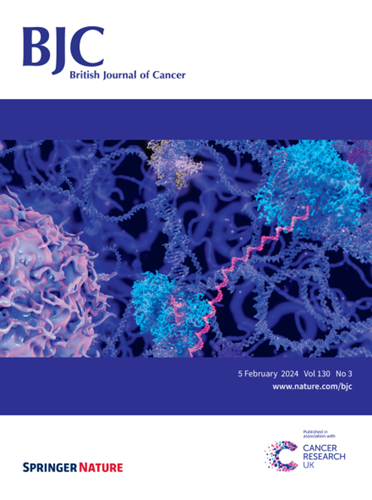生殖因素和上皮性卵巢癌的风险:来自亚洲队列协会的结果。
IF 6.4
1区 医学
Q1 ONCOLOGY
引用次数: 0
摘要
背景:亚洲人群中上皮性卵巢癌(EOC)的危险因素数据很少。我们的目标是在大量亚洲妇女中提高对EOC生殖相关危险因素的认识。方法:本研究汇集了亚洲队列协会11个前瞻性队列(基线年,1958-2015)基线问卷中的个人数据。采用Cox比例风险回归模型估计校正年龄、胎次和队列的风险比(hr)和95%置信区间(ci)。结果:经过平均17.0年(SD = 6.3)的随访,在325,626名女性中发现了674例侵袭性EOC。在多变量调整模型中,我们观察到与胎次呈负相关(5+孩子vs. 0, HR = 0.44, 95% CI = 0.28-0.68, p趋势< 0.001),与绝经年龄增加呈正相关(55+年龄vs.结论:在这项针对亚洲妇女的大型研究中,我们发现与胎次呈负相关,与较高的绝经年龄呈正相关。需要进一步的工作来了解在亚洲人群中更常见的罕见组织学亚型的EOC危险因素。本文章由计算机程序翻译,如有差异,请以英文原文为准。

Reproductive factors and risk of epithelial ovarian cancer: results from the Asia Cohort Consortium
There are scarce data on risk factors for epithelial ovarian cancer (EOC) in Asian populations. Our goal was to advance knowledge on reproductive -related risk factors for EOC in a large population of Asian women. This study used pooled individual data from baseline questionnaires in 11 prospective cohorts (baseline years, 1958–2015) in the Asia Cohort Consortium. A Cox proportional hazards regression model was used to estimate hazard ratios (HRs) and 95% confidence intervals (CIs) adjusting for age, parity and cohort. After a mean = 17.0 years (SD = 6.3) of follow-up, 674 incident invasive EOC cases were identified among 325,626 women. In multivariable adjusted models we observed an inverse association with parity (5+ children vs. 0, HR = 0.44, 95% CI = 0.28–0.68, Ptrend < 0.001), and a positive association with increasing menopausal age (55+ years vs. <45, HR = 1.77, 95% CI = 1.05–3.01, Ptrend = 0.02) for risk of all EOC. In this large study of Asian women we identified an inverse association with parity and a positive association with higher menopausal age in relation to EOC risk. Further work is needed to understand EOC risk factors for rare histologic subtypes that occur more frequently in Asian populations.
求助全文
通过发布文献求助,成功后即可免费获取论文全文。
去求助
来源期刊

British Journal of Cancer
医学-肿瘤学
CiteScore
15.10
自引率
1.10%
发文量
383
审稿时长
6 months
期刊介绍:
The British Journal of Cancer is one of the most-cited general cancer journals, publishing significant advances in translational and clinical cancer research.It also publishes high-quality reviews and thought-provoking comment on all aspects of cancer prevention,diagnosis and treatment.
 求助内容:
求助内容: 应助结果提醒方式:
应助结果提醒方式:


